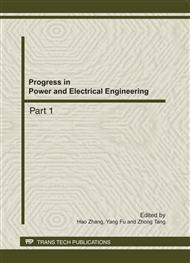p.195
p.201
p.205
p.210
p.216
p.222
p.226
p.231
p.236
Predicting Ash Fusibility of Coal from Coal Properties
Abstract:
It is significant for safe operation and energy saving to foreknow ash fusibility of coal. Ash fusibility of coal was divided into three levels according to softening temperature. The fusibility level was correlated with coal properties by a nonlinear classified model which was built using support vector machine. The model receives coal properties as input variables and would give a judgment of fusibility level as an output. Validation of the nonlinear classified model on 62 training samples yielded 100% accuracy. The prediction accuracy of 15 testing samples was 86.7%. Results indicate that the level of ash fusibility can be accurately predicted from coal properties with the nonlinear classified model.
Info:
Periodical:
Pages:
216-221
Citation:
Online since:
October 2011
Authors:
Keywords:
Price:
Сopyright:
© 2012 Trans Tech Publications Ltd. All Rights Reserved
Share:
Citation:


